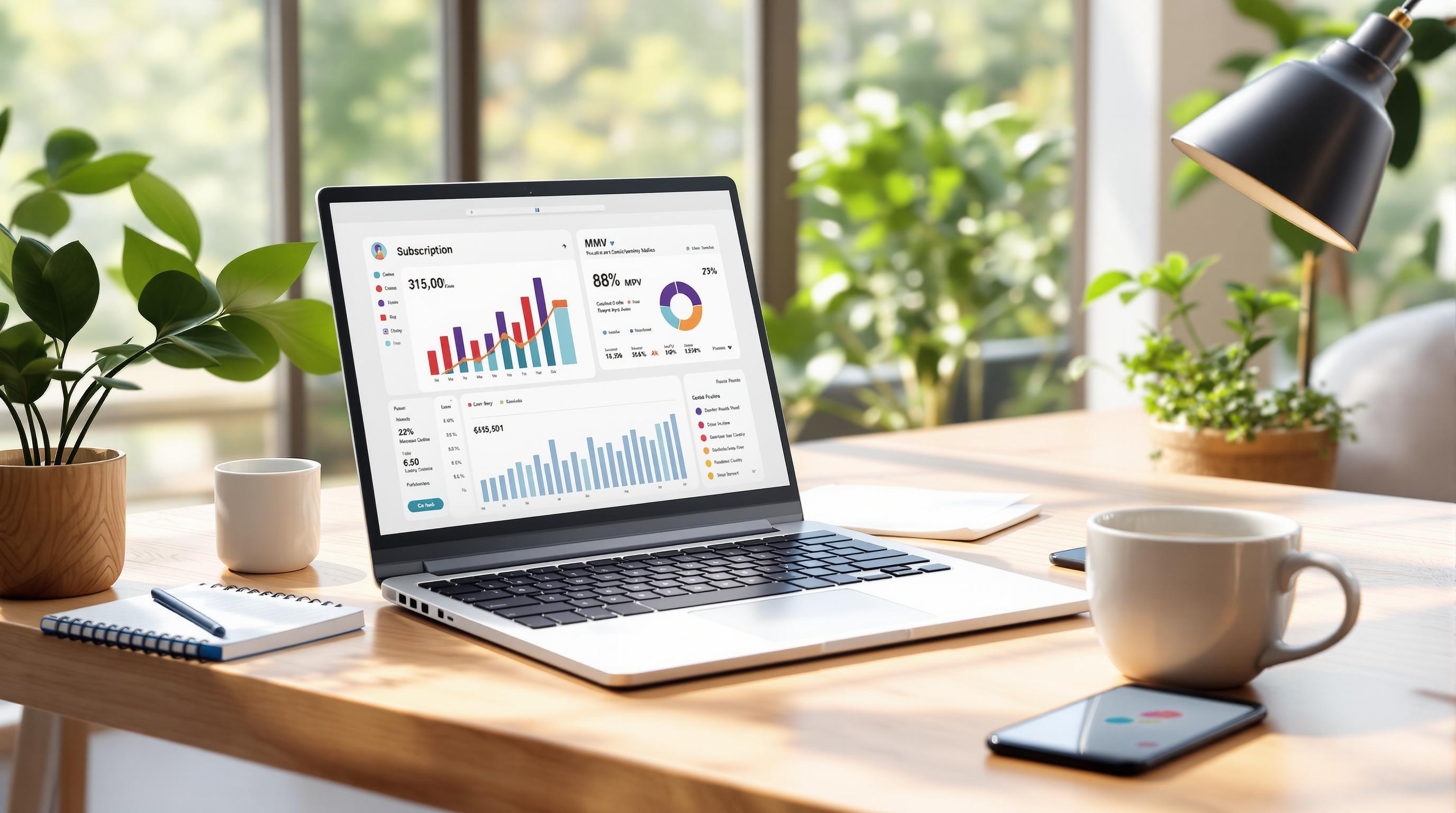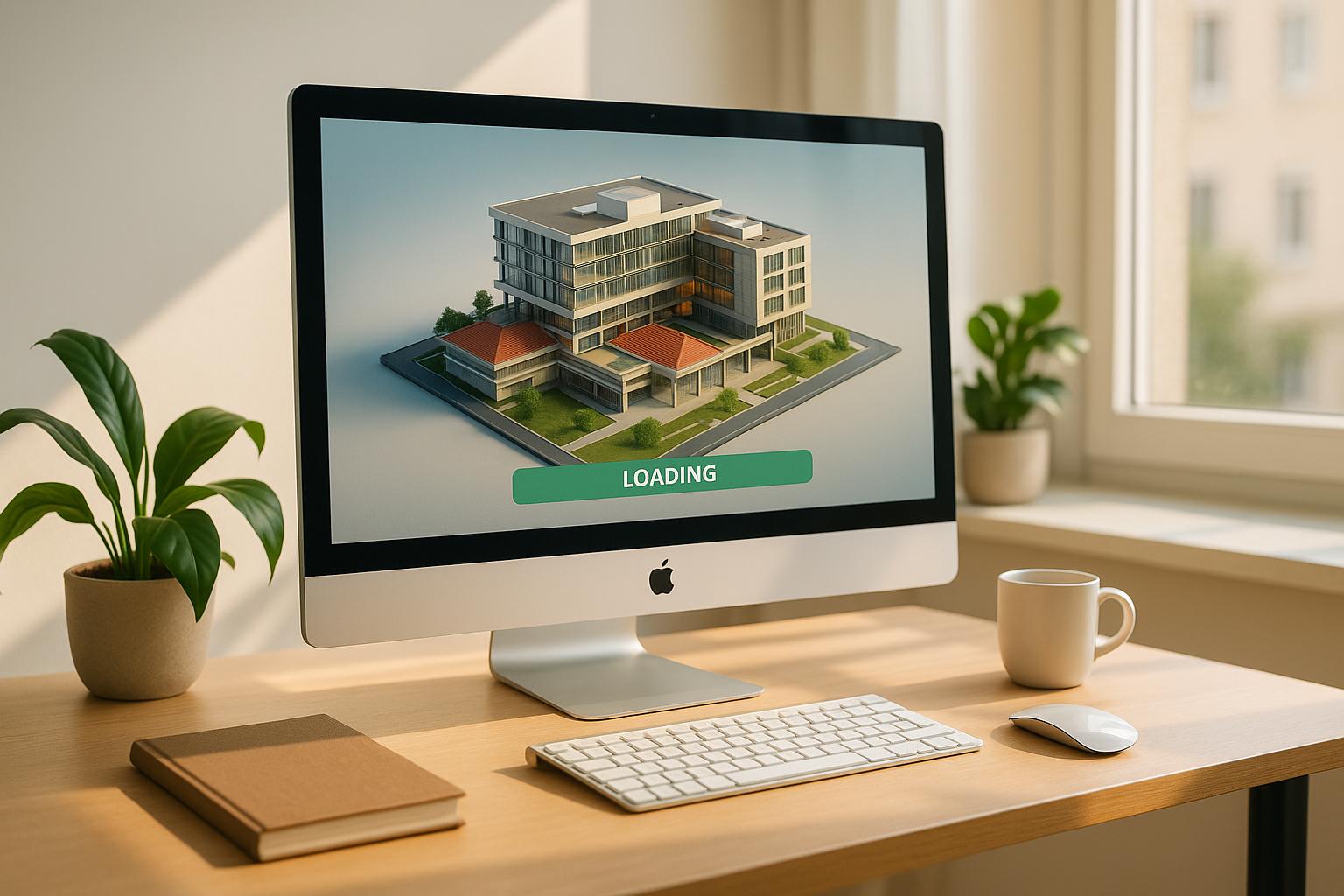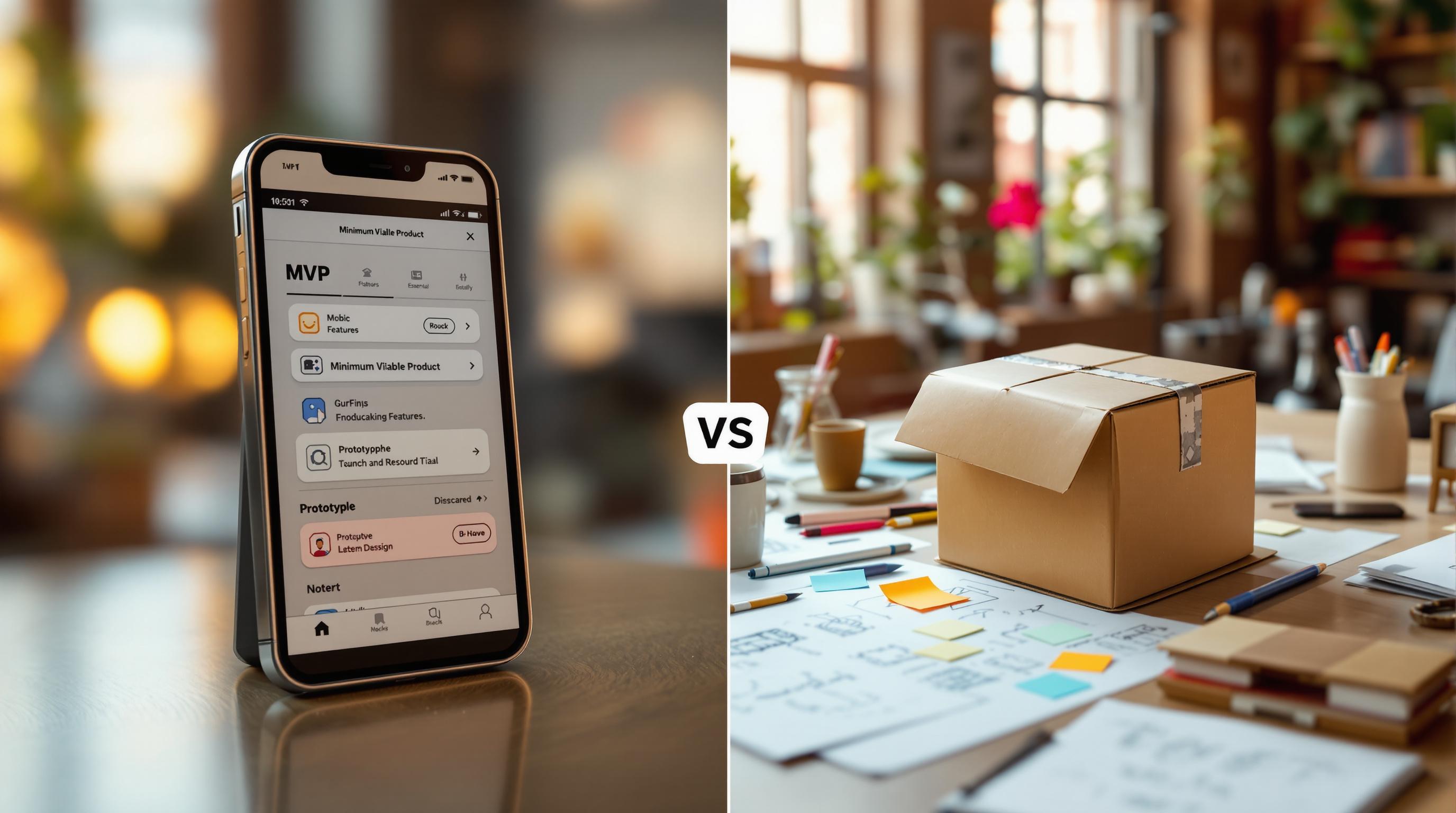Security is not optional for MVPs – it’s essential. Even at the earliest stages, protecting user data and complying with privacy laws like GDPR and CCPA can save you from costly breaches and fines. Here’s what you need to know to secure your MVP:
- Core Security Measures: Use data encryption (AES-256), multi-factor authentication (MFA), and access controls to protect sensitive information.
- Privacy Compliance: Follow GDPR and CCPA by limiting data collection, gaining user consent, and offering data deletion options.
- Common Threats: Prevent SQL injections, XSS attacks, and unauthorized access with secure coding, input validation, and regular audits.
- Best Practices: Collect only necessary data, provide clear privacy policies, and train your team on security basics.
Quick Tip: Start with a data mapping exercise to identify vulnerabilities and ensure compliance. Then, integrate security checks into your development process to catch risks early.
GDPR Explained: Quick Data Privacy Guide for Businesses
Data Privacy Laws and Requirements
MVPs need to follow key data privacy laws to safeguard user information and steer clear of penalties. Here’s a breakdown of the main regulations and how they might impact your product.
GDPR, CCPA, and Other Privacy Laws
Two prominent laws dictate how startups should manage user data:
| Regulation | Jurisdiction | Key Requirements |
|---|---|---|
| GDPR | European Union | Explicit consent, limit data collection, user data rights |
| CCPA | California, USA | Opt-out options, data transparency, deletion rights |
One major difference: GDPR mandates getting clear permission before collecting data, while CCPA focuses on providing users with opt-out options.
Basic Data Privacy Rules
When creating your MVP, stick to these core privacy principles:
Data Minimization: Gather only the data you truly need for your product to function. For instance, a task management app likely doesn’t require users’ phone numbers or home addresses.
Transparency: Your privacy policy should clearly explain:
- What information you collect
- How it’s used
- Who you share it with
- How users can manage their data rights
User Control: Give users the tools to access, delete, and export their data. Also, let them adjust their privacy preferences easily.
Cost of Breaking Privacy Laws
Violating privacy laws can lead to hefty fines and a damaged reputation. For example, CCPA violations can cost up to $7,500 per intentional breach [2]. Beyond the financial hit, losing user trust can severely impact retention.
"Privacy is about more than fines – it’s about earning user trust from day one." – Data Protection Expert [2]
Protecting your MVP requires proactive measures like:
- Regular impact assessments and security audits
- Strong consent management systems
- Clear agreements with vendors on data handling
- Staying updated on regulatory changes through industry resources [2]
Understanding these regulations is just the start. Next, we’ll dive into practical steps to secure your MVP and stay compliant.
Security Steps for Your MVP
Protecting your MVP doesn’t have to be overwhelming. Here’s a practical guide to safeguard your product while keeping things manageable.
Data Encryption Methods
Using encryption is one of the best ways to secure sensitive information. Tools like AWS Key Management Service (KMS) make it easier to manage encryption keys while you focus on building your product.
- Secure data in transit with HTTPS/TLS and data at rest with AES-256 encryption. This protects everything from API calls to stored user records.
- For sensitive information like passwords, rely on strong hashing algorithms such as SHA-256. These algorithms create one-way transformations that are extremely difficult to reverse.
User Access and Login Security
Preventing unauthorized access is crucial. Start with these key measures:
- Multi-Factor Authentication (MFA): Enable MFA for admin accounts and offer it to users. This step blocks the vast majority of automated attacks.
- Access Control: Follow the principle of least privilege. For example, customer support staff might only need view-only access to user data, while developers may require broader permissions.
- Session Management: Secure session tokens and set session timeouts to reduce the risk of misuse or unauthorized access.
Smart Data Collection Limits
Collecting only the data you truly need reduces your exposure to risks. Ask yourself:
- Is this information necessary for the app’s core functionality?
- Do we have a clear, immediate use for this data?
- Can we achieve the same outcome without it?
Additionally, automate data retention reviews to delete outdated information, like user logs older than 30 days.
Finally, always validate and sanitize data exchanged with third-party services. This step helps prevent vulnerabilities and ensures your app maintains data integrity.
sbb-itb-51b9a02
Building Security Into Your MVP
Once you’ve set up basic security measures, the next step is weaving security into your development process.
Security-First Development
Make security a priority from the very beginning of your development workflow. Start with threat modeling during the planning phase to pinpoint vulnerabilities before any code is written.
Use tools like Snyk to automate security checks directly in your CI/CD pipeline. This helps catch vulnerabilities early without slowing down your team. Configure your development environment to automatically scan dependencies and flag potential issues during the build process.
"Security should be a core value integrated into every stage of your company’s operations." – Full Scale
After integrating security into your workflow, the focus shifts to ensuring the code itself is well-protected against potential threats.
Writing Secure Code
Adopt secure coding practices to strengthen your application. For example, use libraries like Validator.js to validate and sanitize all user inputs, which helps prevent SQL injection attacks. Make sure your error handling is designed to avoid exposing sensitive information in stack traces.
Here’s a quick checklist to guide your team:
- Use parameterized queries and validate inputs on both client and server sides.
- Follow the principle of least privilege, limiting system operations to only what’s necessary.
- Regularly update dependencies to address known vulnerabilities.
Picking Secure Technology Tools
Leverage reliable tools to handle security needs, so you don’t have to build everything from scratch. Below is a comparison of tools that can help secure your MVP:
| Security Need | Recommended Tool | Key Benefit |
|---|---|---|
| Authentication | Auth0 or Firebase Auth | Offers MFA and social login support |
| Secrets Management | AWS KMS | Advanced key management capabilities |
| Code Security | Snyk | Automates vulnerability scanning |
| SSL/TLS | AWS Certificate Manager | Simplifies certificate renewal |
Ensure any third-party tools you use meet industry security standards. For example, AWS KMS holds FIPS 140-2 validation [1].
Additionally, implement role-based access control (RBAC) to restrict developer access to only the resources they need for their tasks [3]. Regularly update your security tools and conduct vulnerability assessments to stay ahead of potential risks.
Maintaining MVP Security Over Time
Recent data shows that over half of SMBs don’t have a proper cybersecurity plan, leaving them exposed to new threats.
Security Testing Schedule
Set up a regular testing routine to identify vulnerabilities early:
| Testing Type | Frequency | Key Focus Areas |
|---|---|---|
| Regular Testing | Weekly/Monthly | Automated scans, dependency checks, penetration testing |
| Full Security Audit | Quarterly | Compliance checks, system architecture review |
Keep an eye on metrics like mean time to detect (MTTD) and mean time to respond (MTTR) to evaluate how well your security measures are working.
But testing alone isn’t enough – your team’s knowledge plays a big role in maintaining security.
Empowering Teams and Staying Compliant
Since human error accounts for 82% of data breaches, training your team is critical. Build a security program that includes:
- Mandatory onboarding training for new hires
- Quarterly refresher sessions to cover the latest threats
- Mock phishing exercises to gauge readiness
Consider creating a Slack channel to share security updates and tips in real time.
While training reduces human risks, staying on top of regulations ensures your MVP stays legally secure. The IAPP Westin Research Center tracks privacy law changes across jurisdictions. Use tools like the IAPP’s US State Privacy Tracker and set up a compliance calendar for regular reviews, assessments, and audits to stay ahead of new legislation.
Conclusion: Creating a Secure MVP
Key Security Considerations
When building an MVP, it’s important to strike a balance between moving quickly and ensuring strong security measures are in place. By focusing on data protection, access controls, and compliance from the outset, you not only build trust but also save money by avoiding costly fixes later. This approach lays a solid groundwork for adapting to new security challenges and compliance needs as your MVP grows.
Steps to Start Securing Your MVP
Kick things off with a data mapping exercise to figure out what personal data your MVP collects and processes. This step helps pinpoint vulnerabilities and ensures you’re clear on compliance requirements.
From there, prioritize secure authentication methods, strong data protection practices, and a consistent schedule for security testing. These essentials, as discussed earlier, provide a reliable starting point for your MVP’s security framework.
Security isn’t a one-and-done task – it evolves. Monitor your security metrics and adjust based on user feedback and new threats. Regular audits, team training, and staying on top of compliance are crucial to keeping your MVP secure over time.
Adopting a Security First Development mindset can also make a big difference. By embedding security checks into your CI/CD pipeline, you can catch and fix issues before they hit production, saving time and resources.
"Product security is not a one-time endeavor but rather an ongoing commitment." – Industry Expert [3]
FAQs
How do you practice data privacy?
To ensure your MVP complies with data privacy standards, start by identifying the personal data it collects through data mapping. Limit data collection to what’s absolutely necessary to lower risks and simplify compliance. Tools for automating consent management can help you meet GDPR and CCPA requirements [4].
Here’s a simple framework to guide your data privacy practices:
| Privacy Practice | Implementation | Benefit |
|---|---|---|
| Data Encryption | Use AWS KMS for managing keys and encryption | Safeguards sensitive data in transit and at rest |
| Access Control | Implement MFA and role-based access permissions | Blocks unauthorized access to data |
| Third-party Management | Set up Data Processing Agreements (DPAs) | Ensures vendors follow privacy standards |
Regularly perform vulnerability assessments and penetration tests with a mix of automated tools and manual reviews. Keep your privacy practices well-documented and provide ongoing training to your team on secure coding and compliance measures [3].
"Security must be a priority as you develop your MVP, and failing to take necessary precautions can result in customer privacy breaches, malicious attacks, compliance issues, and reputational damage." [3]









Leave a Reply